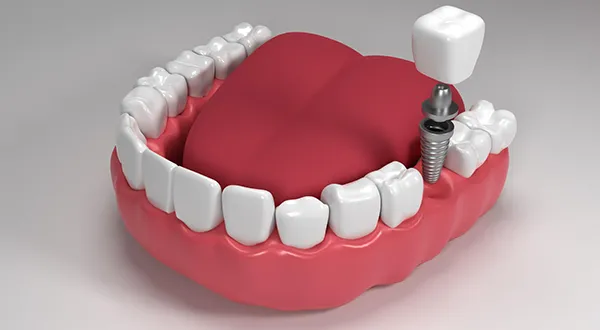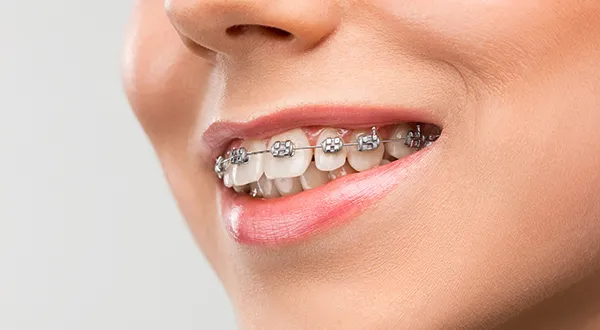Types of Full Mouth Restoration
2024-01-31
Exploring the Different Approaches and Techniques Used in Full Mouth Reconstruction, Including Implants, Dentures, And Crowns
Full Mouth Reconstruction (FMR) emerges as a comprehensive solution for revitalizing oral health in dentistry. This transformative process goes beyond fixing individual teeth; it aims to restore the entire mouth, ensuring functionality and aesthetics.
In this guide, we’ll explore the different types of full mouth rehabilitation, breaking down the approaches that help individuals achieve a healthy and confident smile. Whether you’re dealing with missing teeth, worn-out enamel, or other oral issues, gaining knowledge about the restoration options is crucial. This knowledge empowers you, enabling informed decisions regarding your dental health. So, let’s explore the basics and simplify the world of full-mouth reconstruction.
Complete Mouth Restoration: Types and Diverse Approaches
FMR considers factors such as bite alignment, jaw joint health, and the relationship between the upper and lower teeth. FMR seeks to create a balanced and harmonious oral environment by focusing on these aspects. Two categories of complete mouth restoration exist. In cases where all teeth get extracted, dental implants serve as the foundation for reconstruction, facilitating the creation of fixed bridges or implant-supported overdentures. Alternatively, if only a few teeth are missing and implants are unsuitable, reconstruction can be achieved using bridges and crowns.
Complete mouth restoration incorporates diverse approaches tailored to address individual oral health needs. This comprehensive dental process utilizes a range of strategies, including dental implants, dentures, and crowns, to restore not only the functionality of the teeth but also their aesthetic appeal. Here is a description of the different approaches employed in FMR for your enlightenment.
“Full mouth restoration isn’t just about rebuilding teeth; it’s a transformative journey towards renewed confidence and optimal oral health.”
Dental Implant-Based Restoration
It is a groundbreaking solution for individuals struggling with extensive tooth loss or the necessity of extracting all-natural teeth due to decay or severe damage. Ideal candidates for this transformative procedure possess adequate bone density and good oral health. The meticulous process initiates with the surgical insertion of titanium implants into the jawbone, paving the way for a crucial healing period known as osseointegration.
During osseointegration, the implants seamlessly integrate with the jawbone, providing a durable foundation for subsequent restorations. Following successful integration, abutments are affixed to the implants, serving as connectors for the prosthetic teeth. This meticulous approach opens avenues for various restoration options. These options include fixed bridges, where replacement teeth get permanently secured to the abutments. Additionally, implant-supported overdentures are part of the array, providing a remarkable improvement in stability over conventional dentures.

The dental implant-based restoration is highly personalized and ensures the final restoration results in a natural and aesthetically pleasing smile. Getting new teeth with dental implants works well, 9 out of 10 times or even better. Implant technology and materials advancements offer patients a durable and lifelike solution for comprehensive oral rehabilitation.
Traditional Bridge and Crown Restoration
The traditional bridge and crown restoration method works for individuals with one or more missing teeth, where the adjacent natural teeth provide a stable foundation. This technique is particularly beneficial when the neighboring teeth are in good health, allowing them to serve as support structures for the bridge. The process commences with the preparation of the adjacent teeth, followed by the placement of dental crowns, which cap and protect the prepared teeth.
The artificial teeth (pontics) seamlessly integrate with the crowns, forming a cohesive bridge that effectively spans the gap created by missing teeth. The selection of materials for crowns and bridges is a collaborative decision, considering factors such as durability, aesthetics, and the patient’s preferences.
This method not only addresses the functional aspect of missing teeth but also contributes significantly to the enhancement of facial aesthetics. The careful design and fabrication of crowns and bridges ensure a seamless and aesthetically pleasing smile.
Combination of Implants and Bridges/Crowns
This option works for patients where a combination of missing teeth poses challenges for traditional bridge support. So, a strategic blend of dental implants and conventional bridges or crowns emerges as a dynamic solution. This approach provides a flexible and tailored strategy for addressing the unique complexities of the individual’s oral health. Dental supplements traditional bridges, especially when existing natural teeth alone may not provide adequate support.
Integrating dental implants into the restoration plan enhances the prosthetic teeth’ stability, functionality, and longevity. This blend enables a thorough restoration of aesthetics and functionality.
Dental professionals work closely with patients, considering their oral health needs, preferences, and lifestyle factors. Furthermore, dental technology and materials advancements continue to refine and optimize this combination approach.
Dentures-based Full Mouth Reconstruction
Dentures remain a viable and time-tested option for full mouth reconstruction, especially when many natural teeth are missing or need extraction. Dentures have two main types, i.e., complete and partial dentures. The former works for individuals with no natural teeth, and the latter benefits those with some remaining natural teeth. While traditional dentures rest on the gums, advancements have led to implant-supported dentures, providing increased stability and reducing issues like slippage.
Denture fabrication involves carefully considering the patient’s bite, facial aesthetics, and speech patterns. Although dentures may not offer the same level of stability as dental implants, they remain a valuable and accessible solution for comprehensive tooth replacement in full mouth reconstruction.
Orthodontic Treatment as Part of Restoration
Orthodontic treatment is pivotal in FMR when misaligned teeth, bite issues, or malocclusion present functional and aesthetic concerns. Candidates for this integrated approach undergo a thorough orthodontic evaluation, encompassing tooth alignment, bite function, and jaw relationships. Based on this assessment, a personalized orthodontic treatment plan helps gradually move the teeth into the desired positions.

Braces or clear aligners serve as instrumental tools in achieving proper tooth alignment, thereby contributing to the overall stability and functionality of the restored dentition. Orthodontic intervention helps establish a harmonious occlusion. It contributes to improved oral function and mitigates the risk of future dental issues. Synchronizing orthodontic treatment with other restorative procedures enhances the overall effectiveness of complete mouth restoration. It also delivers a balanced and aesthetically pleasing result.
Gum Disease Treatment and Periodontal Procedures
Addressing gum disease and incorporating periodontal procedures into the restoration plan is critical for long-term success. Individuals with gum disease affecting the supporting structures of the teeth undergo meticulous scaling and root planing procedures. These non-surgical interventions effectively remove plaque and tartar, laying the groundwork for a healthier periodontal environment. In cases where gum recession is evident, gum grafts become instrumental in restoring the gumline and preventing further deterioration.
Periodontal health is the foundation for successful restorative efforts. Moreover, bone grafts may be incorporated into the plan to restore lost bone tissue in the jaw, providing essential support for dental implants. Regular follow-up care and adherence to recommended oral hygiene practices play pivotal roles in preserving the integrity of the restored dentition.
Final Words
Whether utilizing dental implants for stability, dentures for accessibility, or crowns for precision, each technique plays a crucial role in achieving comprehensive oral rehabilitation. Bridges, with their ability to fill gaps and restore both function and aesthetics, further contribute to the diverse array of tools in complete mouth restoration. This dynamic integration of techniques, guided by dental professionals, empowers individuals toward a renewed and confident smile.
Contact your dentist for a Dental Implant in Walnut Creek, Dr. Massood Darvishzadeh, DDS at Walnut Creek Dental, to learn more about the types of full mouth restoration.
Resource:
The Full Mouth Reconstruction Procedure.
*This media/content or any other on this website does not prescribe, recommend, or prevent any treatment or procedure. Therefore, we highly recommend that you get the advice of a qualified dentist or other medical practitioners regarding your specific dental condition*
Subscribe To Our Newsletter
Get Updates And Learn From The Best